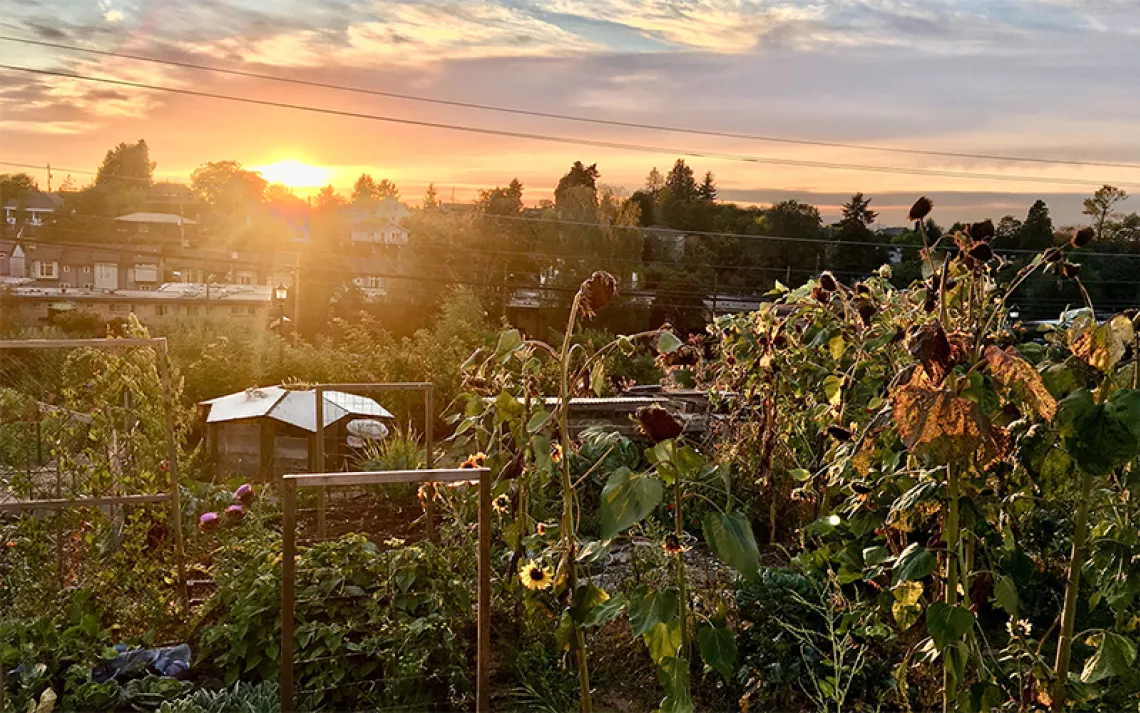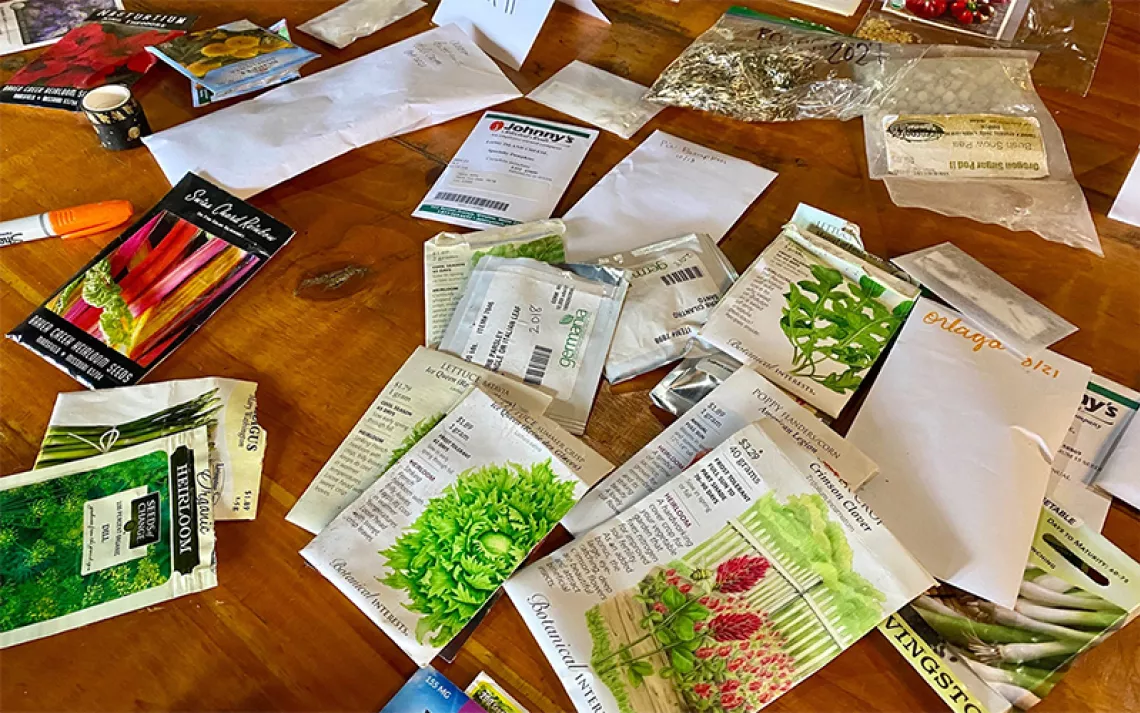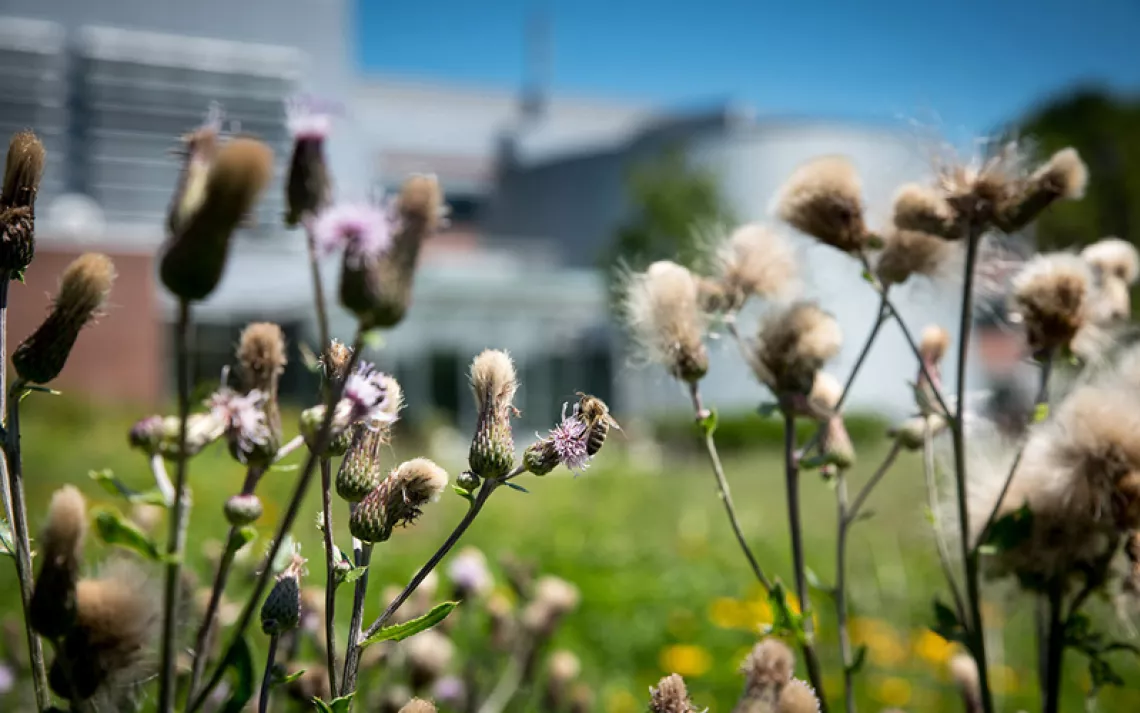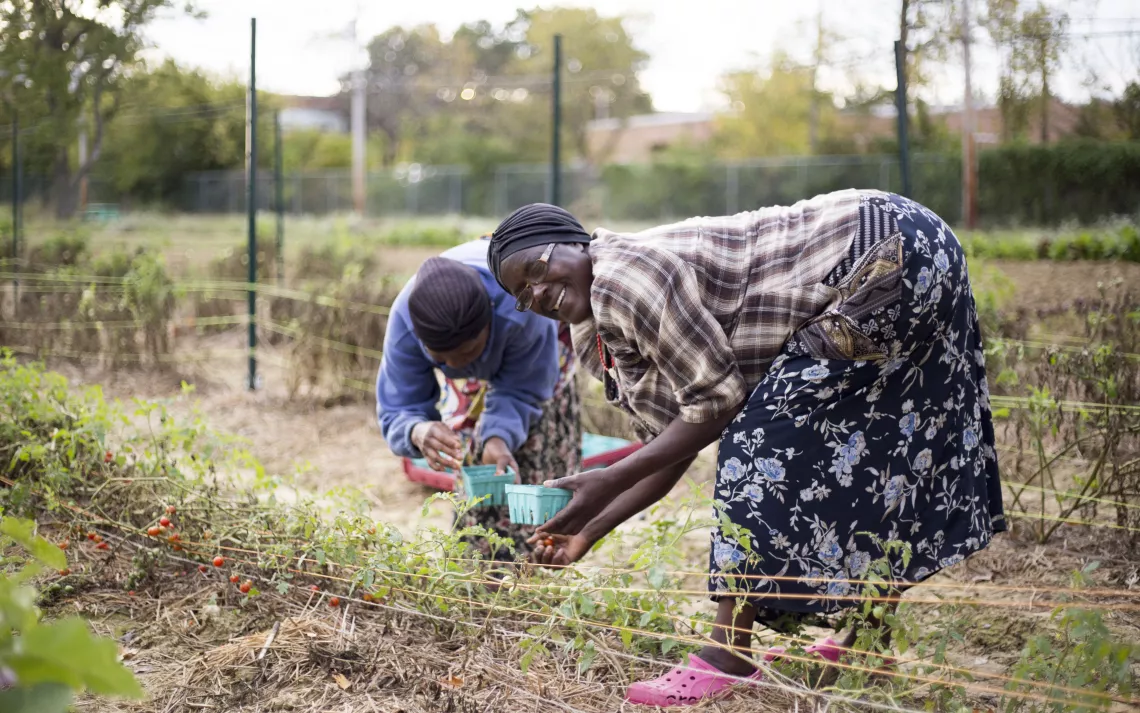How to Garden for the Coming Disasters
Growing equity, plus carrots, peas, and cucumbers
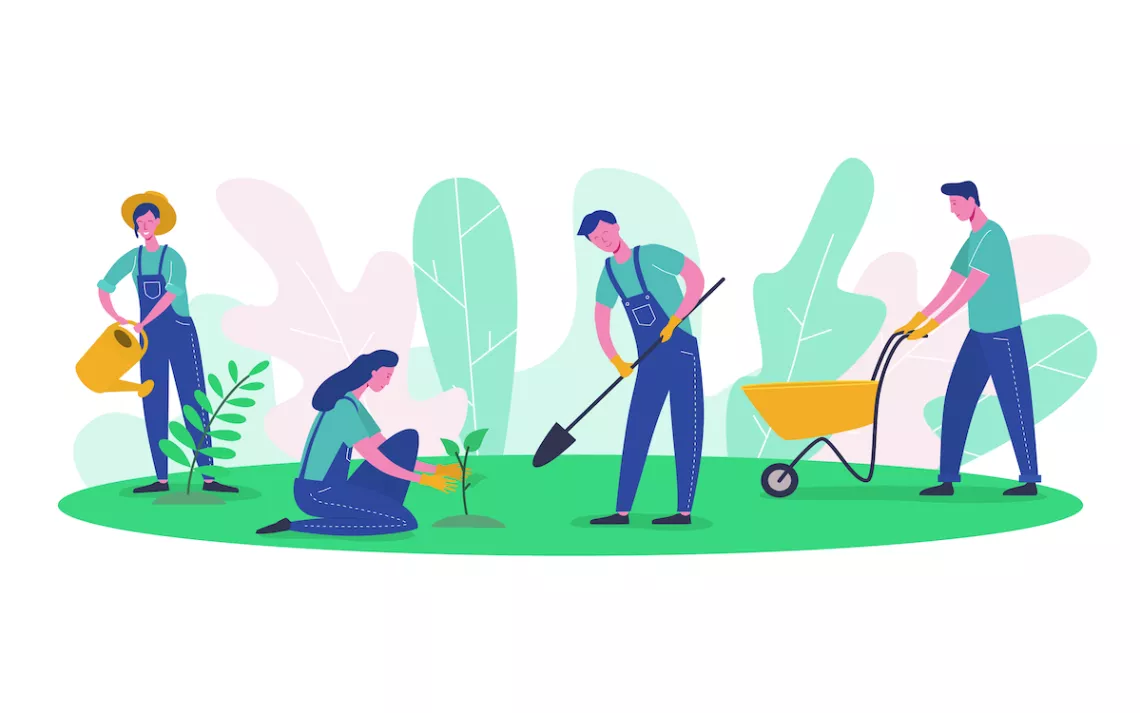
Illustration by iStock | AnnaSivak
Past a discreet sign and down a brief gravel road, there is a community garden in Maine that feels plucked from my imagination. Its patchwork of individual plots sits atop a grassy hill that rolls subtly toward the Presumpscot River. Shiny, slate-tiled faces of two giant solar panels tilt toward the sun. Monarchs bounce around purple allium globes as if spreading glitter. Groundhogs lazily chew grass. There is a petrified whale skeleton returning slowly to soil in a field; when I go there with my daughter, it feels as if we have left planet Earth.
But the garden came to my family in a time of crisis: the early pandemic in Portland, Maine, when I would drive aimlessly with my infant daughter looking for ... something. The garden seemed like an oasis for weary souls; each time we visited, gardeners were hard at work, turning compost and pulling weeds. We put our name on the waitlist and hoped one day to learn a plot would be ours.
Catastrophes often inspire a turn to nature and, for some, specifically, gardening. Wars and economic disasters, meanwhile, have brought bursts of funding for new plots. In her book about community gardens, City Bountiful, professor of landscape architecture Laura Lawson writes, “that gardening satisfies deeply ingrained values associated with nature and individualism helps to explain why gardens are promoted during times of crisis.”
In 2022, we are learning to live with crisis in perpetuity: an ongoing pandemic, widening income inequality, and a climate emergency. These catastrophes manifest most cruelly in communities with the least resources to handle their impacts, where food can already be scarce. But in those first pandemic days, as I envied the gardeners near the Presumpscot, I hadn’t pieced together that a garden was more than just an aesthetic space. It was a tool. And as writer and naturalist Wendell Berry wrote, a grassroots one: “Gardening has a power that is political and even democratic. And it is a political power that can be applied constantly, whereas one can only vote or demonstrate occasionally.”
Historically, community gardens have been sanctuaries and emergency food sources. They have subtler benefits as well, and the power to improve our health and our neighborhoods. But too often, their funding has been inconstant. As conspiring disasters abound, community gardens’ role in addressing food insecurity shouldn’t be provisional: It should be permanent.
Even aside from nature’s well-documented mental health advantages, digging in dirt seems to decrease stress and anxiety. In addition, exposure to certain microorganisms found in soil may boost serotonin and regulate immune systems. There’s more: Gardens and trees help decrease the temperatures in urban heat islands, they foster the exchange of heritage and culture, and they support the biodiversity of important fauna, especially pollinators.
But perhaps the most crucial calling of the urban community garden in 2022 is to address food insecurity on local levels. While not all scholars agree that community gardens address hunger, some studies have found they improve food insecurity and diet. And community gardens may be more welcoming to diverse participants than other measures, such as farmers’ markets. They’ve helped in the past—the Great Depression’s “self-help gardens” grew close to 40 percent of the fruits and vegetables consumed in the United States—and advocates believe they can again.
“They totally can,” says Linda Lipsius affirmatively, when I asked if community gardens could be a healthy and reliable source of food in underserved communities. Lipsius is the executive director at Denver Urban Gardens (DUG), a nonprofit that supports 191 community gardens in metro Denver. “Half [of our gardens] are in under-resourced communities, providing a lot of fresh food that a lot of the families get,” she tells me. “And it’s meaningful. Not only is the food fresh, but it’s culturally relevant.”
One of the ways DUG fosters gardens as reliable sources of sustenance is by offering tools to help people grow for 12 months a year, so the gardens produce continually rather than just during certain seasons. “You will still have to supplement,” says Lipsius, “but I think [urban gardens] can really, actually make a big difference.”
Sarah McCollum Williams, executive director of the gardening-advocacy group Green Guerillas, agrees, noting the pandemic, to some degree, put this theory to the test. People were bored and forced to be outside, so community gardening participation took off. Gardeners got creative. “One of the things that we’ve seen increasingly, as a response to the pandemic, [is a] kind of pooling resources,” McCollum Williams tells me.
Garden stakeholders consolidated their harvests and created networks for distribution. Some gardens produce peppers, others kale, and collectives like the South Bronx Food Hub diversify their bounties through collaboration.
While few would argue against more community gardens, scaling up poses a challenge. Both Lipsius and McCollum Williams told me that though funds are available, getting them is time consuming and requires cobbling together grants and other donations. During past crises, the federal government has provided funding for gardening via specific USDA grants, which helped the programs soar in popularity and productivity.
The USDA still provides grants for urban gardening through the Healthy Food Financing Initiative; the recently passed $50 billion Infrastructure Bill will provide an added boost with funding for community gardens available under the watershed infrastructure provision. Still, groups like DUG and Green Guerillas are crucial for gathering funding and dispersing it to gardens. Both organizations have full-time staff to handle such tasks, but more consistent, nationwide funding would lower the bar for neighborhoods hoping to add growing space and keep it for good.
Reliable, more-accessible funding is the first step, though it isn’t the only obstacle to growing urban agriculture. When led by outsiders, initiatives in underserved areas can fail. “You can’t just go in and say, ‘You’re experiencing food insecurity, and the best way for you to deal with that is to grow your own food,’” explains Jennifer Jettner, an assistant professor of sociology, anthropology, and social work at Auburn University. Community buy-in is key to working community gardens, Jettner says.
“You have to meet with the community first and build trust and relationships. And then, if it’s something they want, then you can offer the resources you have and work with the resources they have,” Jettner says. “The promise with community gardens—if people are intentional about it—is really to build community … to build appreciation across differences, hopefully."
Off the waitlist, bee-stung and dirty in our plot at the community garden, I saw that appreciation build in small ways. By late summer, my family had too many cucumbers from our plot, so we traded and donated. When a fellow gardener fell chronically ill, we chipped in to keep her plants humming along. And as I made my first attempts to grow vegetables, I had fellow gardeners as sounding boards.
The garden was the only thing we had in common—but that was all that was necessary for us to gather and share.
 The Magazine of The Sierra Club
The Magazine of The Sierra Club
